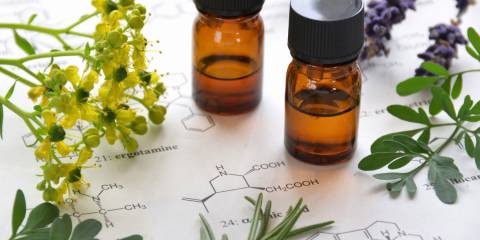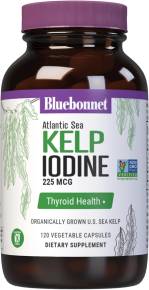In recent years, the call for "evidence-based" medicine has been widespread in medical circles and in the media, creating the impression that drugs have better scientific evidence than natural products for safety and efficacy.
Yet of 10,000 pharmaceuticals the Food and Drug Administration (FDA) monitors, more than 20 have been withdrawn due to safety concerns over the past 25 years.
This figure, however, doesn't reflect dangerous side effects and deaths caused by drugs that remain on the market.
By contrast, very few deaths have been reported in connection with herbs and nutritional supplements, except with the misuse of some ephedra-containing products. Many herbal remedies have had a history of safe use for 2,000 years.
Given the clear statistics compiled by government agencies like the Centers for Disease Control (CDC), it’s easy to argue for the safety of herbal remedies and nutritional supplements, especially compared to OTC and prescription drugs.
Health Risks of Pharmaceuticals
According to a survey published this year, prescription drugs were the underlying cause of 25,031 deaths in 2003 alone.
Drugs’ health risks, side effects, and monetary costs are well-known and widely discussed. Yet what are the hidden costs of such widespread use?
-
Environmental Impact
Toxic chemical byproducts can be released into our water and air during the drugs’ manufacture. Pharmaceutical residues in sewer systems affect our water supply, impacting wildlife as well as humans.
-
Treating the Symptoms
Drugs fail to address the underlying causes of disease so don’t promote health.
-
Immunosuppression
Pharmaceuticals often suppress the body’s natural defense mechanisms, including fever, mucous discharge, diarrhea, and fatigue.
Proving Effectiveness of Natural Remedies
Over many years of clinical and personal experience, I’ve noted that herbal remedies and dietary supplements work more slowly than drugs, generally have far fewer side effects, and support internal balance, helping to promote wellness.
It's often difficult to measure these subtle effects using modern clinical research models.
Many scientific studies are destined to fail because of poor design by scientists or physicians who have little or no clinical or professional experience with herbs and natural remedies.
Herbal and other dietary supplements often provide benefits that develop over time, in many cases putting them beyond the scope of expensive clinical trials.
Despite this difficulty of “proving” the effectiveness of botanicals, many herbal supplements do have substantial evidence using the placebo-controlled, double-blind study.
For example, andrographis and elderberry for fighting colds and flu, as well as butterbur extract for relieving migraine pain, have positive research results to their credit.
Log on to PubMed to find numerous studies on the beneficial effects of natural products, like those that follow.
Treating Symptoms and Discomfort
Respiratory tract infections are so common that every person in the United States has, on average, about 2.4 per year. That's nearly three-quarters of a billion infections annually.
Pharmaceutical Risks
From my clinical experience, I've seen a number of drawbacks to the ready availability and frequent use of OTC and prescription drugs to treat these infections.
Although no "cure" for the common cold or influenza virus has been found, patients still take several drugs to try and reduce unpleasant symptoms including coughs, fatigue, fever, and runny or stuffed sinuses.
-
Drawbacks of Antibiotics
Antibiotics are often unnecessary, produce drug-resistant strains of pathogens, and even suppress our own natural defenses, actually lengthening the symptoms’ duration.
-
Side Effects of Antihistamines
Antihistamines can cause drowsiness, lack of mental clarity, jitters or anxiety, over drying of the sinuses, and increased risk of a more serious sinus infection.
Drugs do little to promote better respiratory or immune health in the process.
Natural Remedies for Cold and Flu Relief
The use of herbal remedies for respiratory health is widespread in many cultures throughout the world, with written records dating back to ancient Greek physicians.
Current clinical human studies show that herbs like andrographis and elderberry have antiflu effects, and these herbs have also been used for centuries in traditional Chinese and European medicine to relieve symptoms of cold and flu.
-
Traditional Decongestant Herbs
Traditional decongestant herbs like xanthium fruit, yerba santa, platycodon, and peppermint are effective for opening airways and reducing stuffiness that often accompanies a cold or flu, without drying or drowsiness.
They make valuable additions to respiratory formulas, especially in light of the FDA-mandated removal of pseudoephedrine products from drugstore shelves.
-
Herbal Antibiotics
Antibiotic herbs, like coptis and oregano oil, can help reduce secondary bacterial infections that often accompany colds and flu. Coptis contains berberine, an effective broad-spectrum microbial ingredient.
My clinical experience using these herbs shows them to be safe and often helpful for relieving symptoms and speeding healing.
Natural Remedies for Pain Management
We all experience discomfort to some degree, with the most common pain—headache—suffered by 96 percent of the population at some time in their lives. According to the American Academy of Pain Management, an estimated 50 million Americans live with chronic pain.
An additional 25 million suffer acute pain resulting from surgery or accident and two-thirds of these individuals have been living with pain for more than five years.
The most common types of pain include arthritis, lower back pain, bone/joint pain, muscle pain, and fibromyalgia. In my clinical practice, I’ve found several herbs to be of great benefit for pain.
-
Corydalis for Pain Relief
Corydalis is a small underground stem related to the poppy family used in China for at least 2,000 years to help remove blood stasis and relieve pain.
Calm and Soothe Pain with California Poppy
California poppy is also popular in European clinical practice for its calming and pain-reducing properties. Unlike opium poppy, it has no addictive California poppy alkaloids but contains other alkaloids found to relieve pain.
-
Chronic Pain Relief with Meadowsweet
Meadowsweet has a mild pain-relieving effect for chronic pain. The salicylates in this herb are slowly absorbed, unlike aspirin, and will not produce side effects such as digestive upset, stomach ulcers, or liver stress.
-
Chinese Red Peony to Promote Healing
Chinese red peony also contains natural salicylates and helps "move the blood" according to traditional Chinese medicine. This action is cited as important for relieving pain and promoting healing.
Twenty-four million Americans experience debilitating migraine headaches, and OTC or prescription drugs provide limited relief, sometimes with dangerous side effect risks, including:
- rebound headaches
- exhaustion
- depression
- hair loss
- weight gain
- insomnia
-
Reduce Inflammation with Butterbur
Recently, a natural ingredient from the butterbur plant, petasin, has been studied for its remarkable anti-inflammatory and antispasmodic (relaxes blood vessels) activity.
Several positive human clinical trials on a trademarked butterbur extract, Petadolex®, have stimulated much interest.




